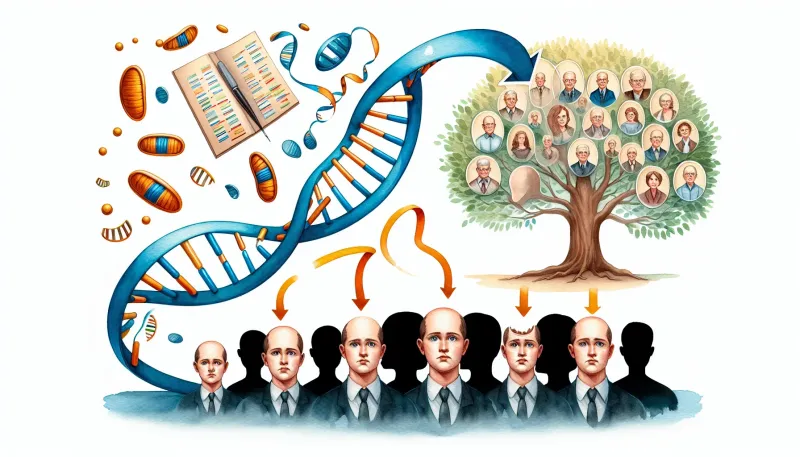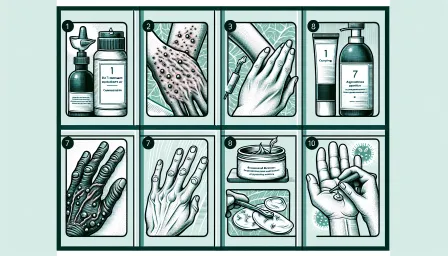Unraveling Baldness Genetics and Family History: What You Need to Know

Explore the intricate connection between baldness genetics and family history. Understand the science, inheritance patterns, and potential solutions with our comprehensive guide.
Baldness is a common concern affecting millions of individuals worldwide. While several factors contribute to hair loss, genetics plays a crucial role. Understanding how baldness genetics and family history influence hair loss can help you take informed steps to manage and possibly prevent it. In this comprehensive guide, we will delve into the intricate world of baldness genetics, inheritance patterns, and potential solutions.
Understanding Baldness Genetics
Genetics is a key factor contributing to male and female pattern baldness. Hair loss in both genders tends to follow hereditary patterns, often passed down through families. Research studies suggest that baldness genetics involve multiple genes, making it a complex trait influenced by various genetic components.
The Role of Androgens
Androgens, a group of hormones including testosterone, play a significant role in hair loss. The most well-known androgen influencing baldness is dihydrotestosterone (DHT). DHT is derived from testosterone and binds to receptors in hair follicles, leading to follicle shrinkage and eventually causing hair thinning and baldness.
The AR Gene
The androgen receptor (AR) gene located on the X chromosome is one of the primary genes linked to pattern baldness. This gene determines how sensitive hair follicles are to DHT. Variations in the AR gene can increase the likelihood of developing androgenetic alopecia, the most common form of hereditary hair loss.
Family History and Inheritance Patterns
Family history is a strong indicator of an individual's likelihood of experiencing hair loss. Both maternal and paternal genetics contribute to baldness, though the inheritance patterns can vary.
Maternal Lineage
It is commonly believed that the propensity for baldness is inherited from the mother's side of the family. This is due to the AR gene being located on the X chromosome, which males inherit from their mothers. As a result, if your maternal grandfather experienced significant hair loss, there is a higher chance you might too.
Paternal Lineage
While the AR gene is often highlighted, other genetic factors on autosomal (non-sex) chromosomes inherited from both parents also play a role in hair loss. Therefore, if your father or paternal relatives have a history of baldness, this increases the likelihood of you experiencing hair loss as well.
Polygenic Inheritance
Pattern baldness is considered a polygenic trait, meaning it involves multiple genes inherited from both parents. This polygenic nature adds to the complexity of predicting hair loss based purely on family history. Understanding your family history can provide some insights, but it is not the sole determinant of your future hair health.
Solutions and Prevention Strategies
While genetics play a significant role in baldness, several strategies and treatments are available to manage and potentially prevent hair loss. Here are some options to consider:
Medical Treatments
- Minoxidil: An over-the-counter topical treatment that stimulates hair growth and slows hair loss.
- Finasteride: A prescription oral medication that reduces DHT levels, preventing further hair loss and promoting hair regrowth.
- Spironolactone: Often prescribed for women, this medication reduces androgen levels, helping combat hair loss.
Non-Medical Interventions
- Hair Transplant: A surgical procedure that moves hair follicles from one part of the body to the balding areas.
- Low-Level Laser Therapy (LLLT): A non-invasive treatment using red light to stimulate hair growth.
- Scalp Micropigmentation: A cosmetic tattooing technique that mimics the appearance of a closely shaved head.
Lifestyle and Preventive Measures
- Healthy Diet: Consuming a balanced diet rich in vitamins and minerals supports hair health.
- Proper Hair Care: Gentle hair care practices, such as avoiding excessive heat and harsh chemicals, can help maintain hair health.
- Stress Management: Reducing stress through techniques like meditation and exercise can mitigate hair loss caused by stress-related conditions.
Conclusion
Understanding the intricate relationship between baldness genetics and family history can empower you to take proactive steps in managing hair loss. While genetics play a significant role, a combination of medical treatments, non-medical interventions, and lifestyle changes can help mitigate and potentially reverse hair loss. Consult with a healthcare professional to determine the most suitable approach for addressing your unique situation. By staying informed and taking appropriate measures, you can work towards maintaining healthy hair for years to come.



























